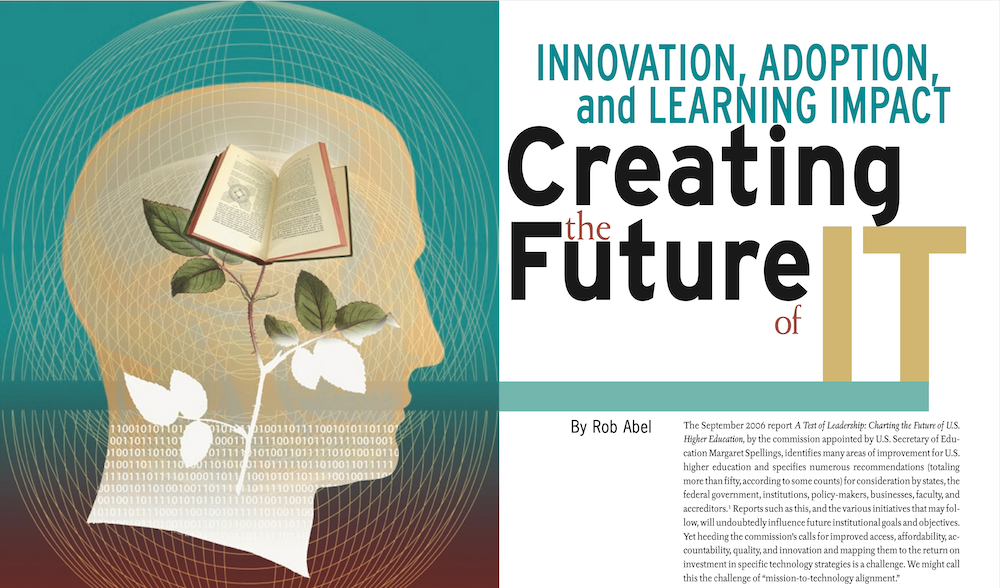 Rob Abel, Ed.D. | July 2021
Rob Abel, Ed.D. | July 2021
"Don’t let the sound of your own wheels make you crazy." —The Eagles/Jackson Browne
How is IMS Global Learning Consortium Unique in the World of EdTech?
As edtech leaders, we want our technology infrastructure to be supportive of improving teaching, learning, and outcomes. The pandemic has highlighted the need for our ecosystem designs to be agile, scalable, supportive of diverse resources, and safe. All while improving ease of use and productivity for faculty and students, who are under increased stress.
The collaboration across the IMS community at the Contributing Member level is passionate and inspiring. There are many great organizations in the education sector. The IMS community is unique.
IMS is the place where the connectivity in edtech is imagined, defined, adopted, and continuously improved. We completely own this responsibility K-12 and HED. And we own connectivity working right now and getting better in the future.
But the collaboration in IMS is more than just inspiring—it pays off. Combining the long-term perspective coupled with the short-term need to solve problems is not just exciting; it is why the IMS community achieved the preparedness that was essential when the pandemic hit. Recently the IMS reflected on the member experience of their organizations. I was amazed to hear that the work of IMS was not just a big benefit with the pandemic, but that IMS work also has helped similarly with other life-changing events, namely a major hurricane and a ransomware attack.
Another energizing aspect of the IMS community is the cooperation and collaboration between institutions and suppliers. Trust is also a key pillar of effective collaboration. The IMS collaboration uniquely builds lasting trust. The commitment to verified use of open standards means benefits today and focuses us on ensuring better connectivity among a growing universe of edtech. It is our commitment to work together to help faculty and students now and in the future.
People sometimes assume that I became IMS CEO because I believe in the power of standards. I do believe in the power of standards and have a deep background in tech standards before ever getting into the education sector. But the reason that I saw potential in IMS is that my experience in the education sector convinced me that greater collaboration among education sector stakeholders, both institutional and corporate, is essential to get to a truly better future. It turns out that standards are one of the most powerful ways to collaborate because they can enable cost containment, scale, and innovation. There aren’t many things that can do all of those three things at once. And, because we all agree to implement a common foundation, that is, the standards, they create what is, in essence, an implicit “partnership” where we are all investing in our future together.
Getting really useful standards is hard. To be really useful, a standard has to be the best way or at least as good as any other way to achieve the integration goal. But “best” is complicated. Best includes most efficient but also most effective. "Effective" relates to the user experience as well as enabling the right functionality and data. This requires deep insight—coming from deep collaboration. Again, it comes back to collaboration.
In an article I wrote for EDUCAUSE Review in 2007 (Innovation, Adoption, and Learning Impact: Creating the Future of IT), I estimated the investment in academic-related IT services at perhaps 1.2% of all expenses institution-wide as a proxy for how much institutions are investing in building core capacity to enable the future of instruction. Typically, 6-12% of operating expenses in other industries are focused on future product development. While this is not an apples-to-apples comparison, it points out that one would expect that HED institutions of any size are likely challenged to provide the level of support to faculty to improve the use of technology for teaching and learning systematically. If that rough calculation doesn’t convince you, another way to think about it is that while our great universities are known for advancing many fields, teaching and learning is generally not one of them.
Great standards are hard to achieve. Effective collaboration that produces something multiple parties can utilize is even harder. I am in awe of the IMS community as they work together to create a force multiplier that is greatly needed to make a better tomorrow for every learner. The edtech sector cannot thank you enough! But, perhaps most importantly, the IMS community is a place where edtech leaders at all levels can come, share, and, yes, get the help we all need to solve today and tomorrow’s challenges. Once an IMS member, you are never alone.
Don’t forget to register for Learning Impact 2021 virtual, 4-7 October!



